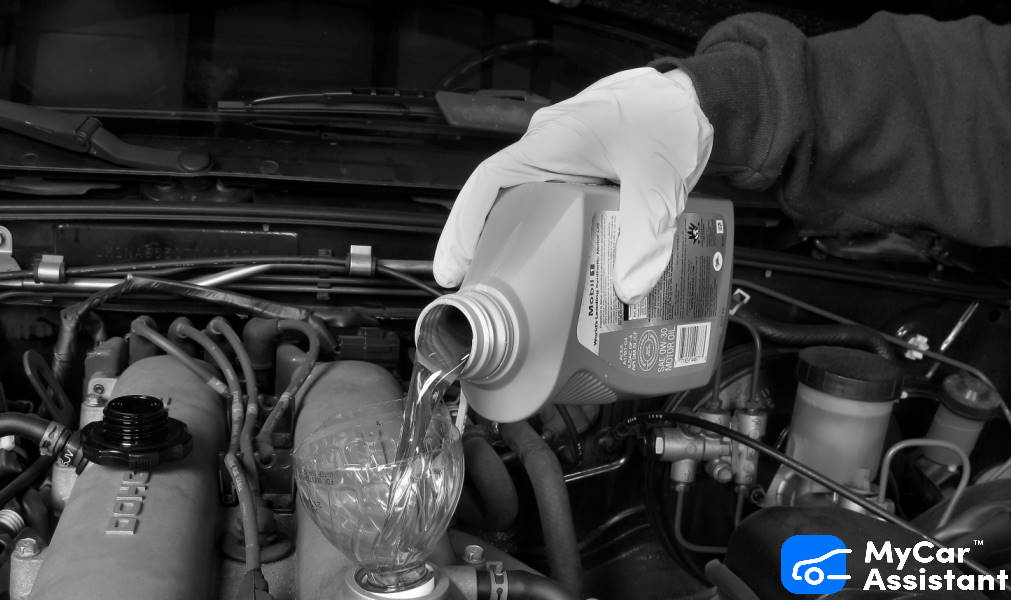The basic rule is simple, put exactly what the recommended quantity is but if you exceed the optimal level, find out below what you have to do.

The oil level should not exceed the maximum limit indicated in the user manual. Accidentally, situations may occur when changing the oil or topping it up leads to an increased oil level, above the maximum limit.
In the old days, when everyone changed their own engine oil, such problems were common. A little more oil dripped from the bottle and the oil level was going over the specified maximum limit. Nowadays, oil changes should be done during periodic overhauls, and the qualified mechanics should not have these kind of problems.
However, those who frequently top up the oil level because the engine is buring oil, may make a mistake or deliberately choose to add more oil than necessary. How bad is it and what can happen in this case?
- Poor engine performance
- Smell of burnt oil
- Smoke coming out of the exhaust pipe
- Oil leaks
Depending on how much is over poured, there are several things that can happen. For an insignificant exceeding of the maximum oil level, nothing will happen. Anything more than that, and too much oil pressure will force the oil seals, leading to oil leaks. In more serious situations, the pressure will deform the oil sump and push the oil through the seals.
A slightly higher level will cause the oil to touch the crankshaft during its rotation. The quick movements will produce aeration in the oil – that’s how mayonnaise is made. The oil will become foamy and lose its lubricating effectiveness, possibly causing the engine to seize.
In extreme cases, when the oil level reaches the pistons, it will cause them to block – a phenomenon known as hydroblocking. Remember that oil, like any other liquid, is not compressible like air is. A piston that encounters liquid in its stroke will not be able to travel the entire stroke. The consequences are serious, possibly leading to broken connecting rods or even pistons.
Therefore, do not hesitate to drain the excess oil through the drain plug of the oil pan. Failure to do so can have disastrous consequences for the engine. In simple terms, an engine probably won’t suffer if the oil is below the minimum level for a short period of time (assuming there is still enough oil in the system). Conversely, exceeding the maximum level can be catastrophic.
Just as important as the quantity of oil is its quality.
How do you check the oil level?
If you have recently changed the oil and you see thick white smoke coming out of the exhaust while driving, then there are high chances that you have put too much oil in the engine. To check if you put too much oil in the engine, drive the car for 5-10 minutes to warm up the engine. This way you will ensure that you will receive the correct information on the dipstick.
Park the car on a flat surface and leave it like that for 5 minutes to allow the oil to drain all the way into the crankcase. After 5 minutes, lift the hood, look for the rod or dipstick, remove it from its support, wipe off the excess oil and insert it back into the engine.
Now take it out again and check the level, if the oil level is above the maximum limit on the dipstick, it is clear that you put much oil in the engine than it should have. Each rod has a minimum and a maximum level. If you can’t make any sense of the oil level at first, completely clean the dipstick with a paper towel and repeat the process. Now you should be able to see the exact oil level in your engine.
In order not to forget which type of oil should be used for your car, write down this information for FREE in the MyCar Assistant application and install it from the AppStore or Play Store. We always notify you before documents or revisions expire to save you money and time. In addition to notifications, you can save important documents in digital format directly in the application, take notes such as the type of oil used, renew RCA insurance directly from the application at the best prices and much more.


